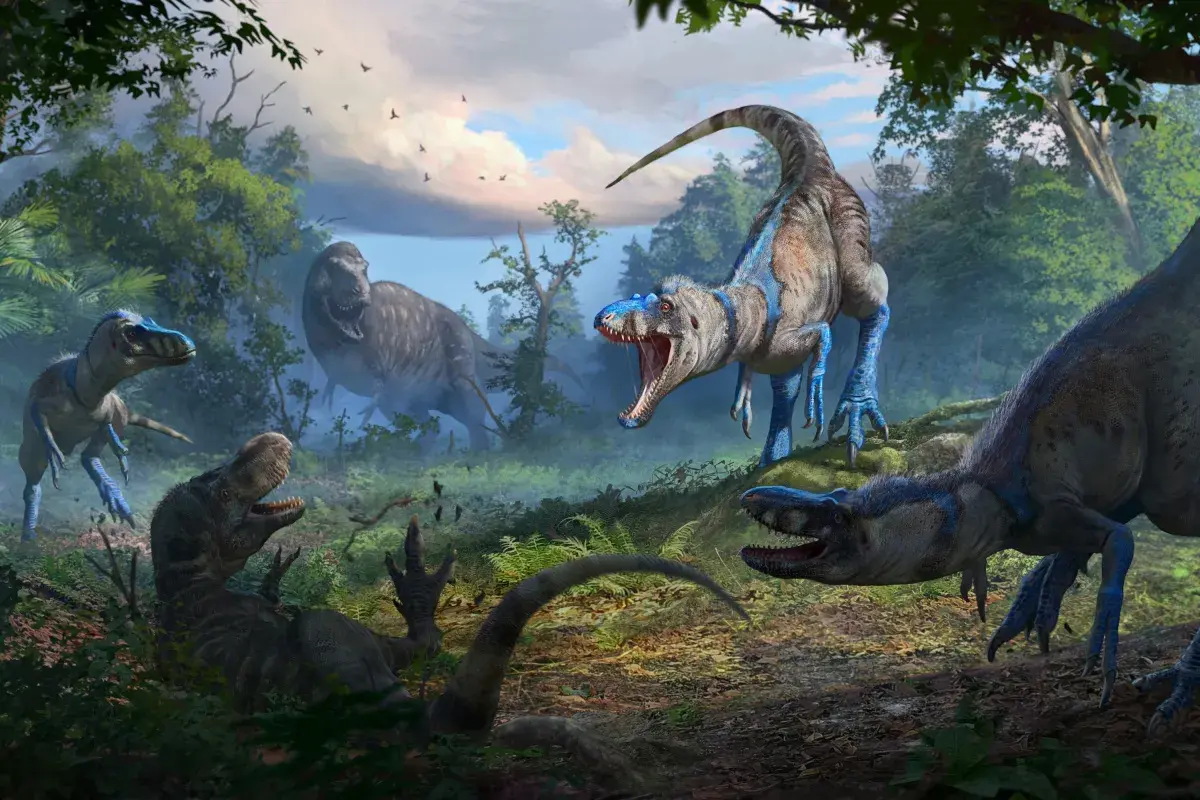Copyright Newsweek

A case of mistaken identity seemingly finally settled this week could shake up vast swathes of what we thought we knew about the most ferocious of dinosaurs—Tyrannosaurus rex. For years, paleontologists have used fossils of what were thought to be juvenile T. rex to model the growth and behavior of the “tyrant lizard king.” However, this practice is rooted in some controversy, with many scientists arguing that the smaller “T. rex” specimens are, in fact, really examples of a different, diminutive species belonging to the genus Nanotyrannus. Now, a team of researchers reports that the latter is correct, based on analysis of a tyrannosaur fossil that makes up part of Montana’s famous “Duelling Dinosaurs.” Unearthed in 2006, this specimen contains two dinos—the tiny tyrannosaur and a Triceratops horridus—that were preserved locked in deadly combat some 67 million years ago. But instead of being a teenage T. rex, as many thought, the young tyrannosaur is actually a member of the species Nanotyrannus lancensis. “The fossil doesn’t just settle the debate,” said paper author and paleontologist Professor Lindsay Zanno of North Carolina State University, in a statement. Instead, she added, the new finding “flips decades of T. rex research on its head.” In their study, Zanno and her colleagues re-analysed the duelling tyrannosaur, examining growth rings in the bones, developmental anatomical features and patterns of fusion in its spinal bones. They determined that the specimen was around 20 years old at the time it died—and physiologically mature. Furthermore, they explain, many of its features—including larger forelimbs, a large number of teeth, a small number of tail bones and distinct nerve patterns on the skull—would have been fixed in early development and are incompatible with what we know about T. rex. “For Nanotyrannus to be a juvenile T. rex, it would need to defy everything we know about vertebrate growth,” said paper author and anatomist James Napoli, of Stony Brook University, in a statement. He added: “It’s not just unlikely—it’s impossible.” The findings not only call into question assumptions about how T. rex developed, but also reveal that multiple tyrannosaur species lived alongside each other in the same ecosystems in the last few million years before the dinosaurs were wiped out in the wake of an asteroid impact. “This discovery paints a richer, more competitive picture of the last days of the dinosaurs,” Zanno said. “With enormous size, a powerful bite force and stereoscopic vision, T. rex was a formidable predator, but it did not reign uncontested. Darting alongside was Nanotyrannus— a leaner, swifter and more agile hunter.” As part of their study—which also involved the examination of more than 200 different tyrannosaur fossils in total—the researchers have also identified another species of Nanotyrannus, one with different features from the Duelling Dinosaurs’ N. lancensis. The team has dubbed the novel species N. lethaeus, in reference to the River Lethe of Greek mythology (the underworld’s “river of forgetfulness”) and how the tyrannosaur's true nature was hidden in plain sight for decades. Professor Lawrence M. Witner, a paleontologist at Ohio University, was not involved in the present study, wrote in an accompanying commentary paper, said, “A key strength of Zanno and Napoli’s article is that it is a dispassionate exposition of scientific reasoning rather than a diatribe advocating a particular view." “It’s worth emphasizing that there is much more at stake here than declaring a victor in the debate,” he continued. “There are literally decades of research and probably hundreds of publications based on a premise that this article overturns.” T. rex, he notes, has become something of a model species, used in analyses of biomechanics, biogeography, ecology and evolutionary relationships. “These analyses will all need revision,” Witmer notes. “Given the investment in the consensus view, that side is unlikely to go down without a fight, but this exceptionally researched study by Zanno and Napoli puts Nanotyrannus on a solid foundation.” Do you have a tip on a science story that Newsweek should be covering? Do you have a question about dinosaurs? Let us know via science@newsweek.com. References Witmer, L. M. (2025). Debated fossils aren’t of T. rex but a smaller rival. Nature. https://doi.org/10.1038/d41586-025-03552-0



